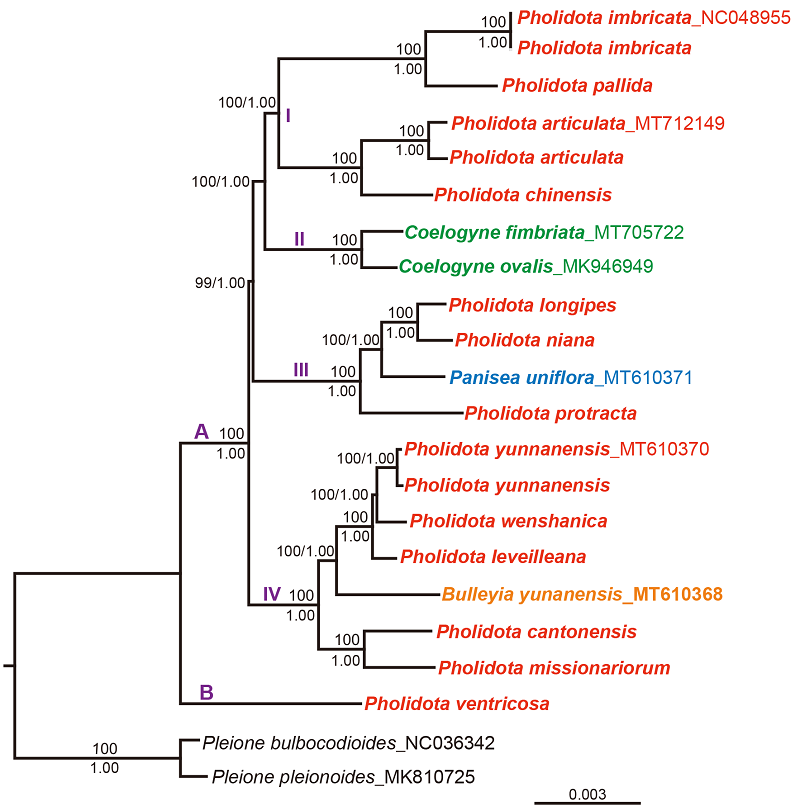

The orchid genus Pholidota Lindl. ex Hook. consists of approximately 30 species widely occurs in tropical and subtropical Asia, with 15 species recorded from China. It is of great economic and medicinal impor-tance. Several species of this genus have been commonly used as traditional medicine for many centuries. However, the systematic status of the genus and intergeneric relationships inferred from previous molecular studies are unclear due to insufficient sampling and lack of informative sites. So far, only limited genomic information has been available. The taxonomy of Pholidota remains unresolved and somewhat controversial.
In this study, the complete chloroplast (cp.) genomes of thirteen Pholidota species were sequenced and analyzed to gain insight into the phylogeny of Pholidota and mutation patterns in their cp. genomes. All examined thirteen Pholidota cp. genomes exhibited typical quadripartite circular structures, with the size ranging from 158,786 to 159,781 bp. The annotation contained a total of 135 genes in each cp. genome, i.e., 89 protein-coding genes, 38 tRNA genes, and eight rRNA genes. The codon usage analysis indicated the preference of A/U-ending codons. Repeat sequence analysis identified 444 tandem repeats, 322 palindromic repeats and 189 dispersed repeats. A total of 525 SSRs, 13,834 SNPs and 8,630 InDels were detected. Six mutational hotspots were identified as potential molecular markers. These molecular markers and highly variable regions are expected to facilitate future genetic and genomic studies. Our phylogenetic analyses confirmed the polyphyletic status of the genus Pholidota, with species grouped into four main clades (Fig. 1): Pholidota s.s. was resolved as the sister to a clade containing species of Coelogyne Lindl.; the other two clades clustered together with species of Bulleyia Schltr. and Panisea (Lindl.) Lindl., respectively; species P. ventricosa was placed at the basal position, deviated from all other species.
The results of this study were published as “Comparative analyses and phylogenetic relationships of thirteen Pholidota species (Orchidaceae) inferred from complete chloroplast genomes” in BMC Plant Biology. For further information, please visit: https://doi.org/10.1186/s12870-023-04233-8
Associate Professor Lin Li and master graduate Wan-Yao Wang at the South China Botanical Garden (SCBG) of the Chinese Academy of Sciences (CAS) are the co-first authors, Professor Song-Jun Zeng at SCBG, CAS and Professor Zhong-Jian Liu at Fujian Agriculture and Forestry University are the co-corresponding authors. The research was supported by the National Natural Science Foundation of China.

Fig 1. The ML phylogeny of Pholidota and its closely related genera in subtribe Coelogyninae inferred from 22 complete cp. genomes with Pleione spe?cies as the outgroups

